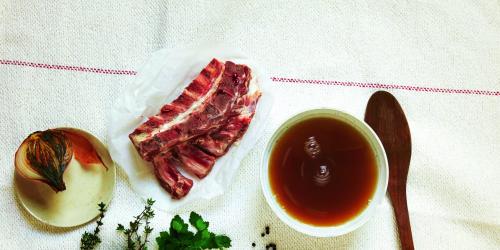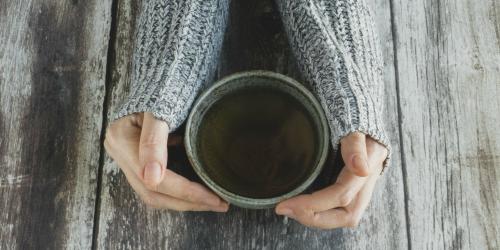Simply grilled or drizzled with a squeeze of lemon, fish is popular!
In addition to the fineness of its flesh and its flavor, it is an ultra-beneficial food : low fat protein, omega 3 good mood, vitamins D and B for strong bones, accompanied by iodine, phosphorus, selenium. Even its edges do not stop us anymore.
In 1950, individual consumption in France was 12 kg per year. It is now 34 kg *. The other side of the coin: some species are threatened. Nearly 80% of stocks are currently exploited to their fullest, or over-exploited.
And if breeding represents an interesting alternative, it can also, poorly supervised, wreak havoc on the entire ecosystem (high rate of waste in case of high concentration of fish, feeding pillage of other species ... ).
The only way out is to opt for varieties that are not endangered or raised with respect for the environment.
* Source: Nicolas Hulot Foundation
- SALMON: breeding is good!
Why we love him
For its omega 3 (2.3 g / 100 g), which prevents cardiovascular pathologies and helps to build the nervous system. And this "fat" fish (13% of lipids) only brings 200 kcal per 100 g.
The ecological risk.
Wild salmon have been overfished, so it's almost impossible to find them on the stalls of fishmongers. Most of the salmon marketed comes from well-seasoned farms.
Which one to choose ?
We prefer salmon raised in the North-East Atlantic ( Scotland, Ireland or Norway), its natural ecosystem, and bearing a label (read opposite). This guarantees a farm that is compatible with the environment and sufficiently respectful of fish, unlike industrial farms (avoid Chilean salmon).
- CABILLAUD: heading north-east!
Why we love him
For its very digestible flesh and its fairly neutral taste. Particularly lean (0.7% fat), it is rich in protein (18%) and not very caloric. It is perfect to keep the line.
The ecological risk.
The stocks are falling, but they are still very disparate: sufficient, for the moment, in Iceland, but rather weak in the North Sea, in Canada and in Greenland. This is why cod farms have appeared in Norway.
Which one to choose ?
We prefer cod caught in the North-East Atlantic and the Pacific. And if it is possible to know more precisely its capture area, it will be chosen without hesitation of Icelandic origin or northern Norway.
- THON: white and nothing else!
Why we love him
For its dense and nourishing flesh. It is low in fat (5.4 g of fat / 100 g), low in calories (100 kcal / 100 g), high in protein (30%), but also in iron (1.3 mg / 100 g) and vitamin PP (10.5 g) that fights fatigue and anemia. A must for the shape.
The ecological risk.
Victim of overfishing in the Atlantic, the Mediterranean and the Indian Ocean, bluefin tuna is today very threatened. Tropical tuna (yellowfin) stocks are also close to the limit. On the other hand, no problem for albacore tuna caught in the Atlantic.
Which one to choose ?
No rearing: tuna only exists in the wild. We prefer the albacore, native of the Spanish coasts or the Bay of Biscay.
- DORADE: gray or royal!
Why we love him
For its lightness and easy preparation: in the oven with vegetables, foil, stuffed, grilled, steamed, carpaccio ... and only 74 kcal, 1 g of fat and 16 g of protein per 100 g.
The ecological risk.
There are three main types of sea bream with very different situations: the rose has become very rare whereas the royal and the gray are not threatened, and are fished and raised in their natural area of predilection (Mediterranean for the first, Atlantic for the second).
Which one to choose ?
We try the sea bream or the royal, but rather of French origin : the farms and fishing conditions (mainly line) are well supervised.
- BAR: we keep the line!
Why we love him
For its fine flesh with a noble taste and its nutritional benefits: only 96 kcal and 1.6 g of fat per 100 g, but 20 g of proteins and vitamins and minerals in shambles. With him, no need to spend hours in the kitchen : it is delicious simply grilled, with dill and drizzled with lemon juice!
The ecological risk .
There are two sources of bars: farmed and wild. And for the wild, two types of fishing: line and trawl. The latter takes the fish in large quantities, it can, in the long run, threaten stocks. It is limited today.
Which one to choose ?
We favor the wild bar of line French, less fat than that of breeding, more ecological than that fished by trawl.
? And the others ?
They are devoured with their eyes closed : mackerel, sardines, saithe, pollack, pout, Alaska pollock, large crustaceans (crab, spider), mussels, oysters, shrimps, cuttlefish.
We really avoid : emperor, swordfish, Atlantic halibut and Greenland, grenadier, sea bass, hake, plaice, ray, saber, sole, turbot.
Source: WWF (World Wildlife Fund for Nature)
? ELEVAGE: we prefer labels
The MSC (Marine Stewardship Council) label: it guarantees the respect of the principles of sustainable fishing defined by FAO (United Nations organization specialized in food).
The AB label: it means that the vegetable part of the fish diet comes from organic farming and without GMO.
The red label: it is awarded according to a strict specifications that includes several criteria such as traditional fishing, impeccable quality and total traceability.
Thank you to Dr. Jean-Marie Bourre, nutritionist, author of "Eating Well, True and False Hazards" (Odile Jacob), Charles Braine, in charge of the WWF Sustainable Fisheries Program, and André Forest, Head of Ecology and Model for the fishery of Ifremer center in Nantes.


